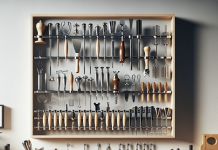Looking to elevate your wine tasting experience? Look no further. In this article, we will take you on a journey exploring the world of wine aerators – from handheld wine aerators to electric wine aerators and decanters. Discover how these innovative gadgets can enhance the flavors and aromas of your favorite wines, ensuring every sip is a delightful experience. Whether you’re a seasoned wine enthusiast or just starting your wine journey, our comprehensive guide will help you choose the perfect wine aerator to suit your taste preferences. So, grab a glass, sit back, and let’s uncork the secrets of wine aerators together.
What is a Wine Aerator?
Definition
A wine aerator is a device used to introduce oxygen into a bottle of wine, enhancing its flavor, aroma, and overall drinking experience. It helps to smooth out harsh tannins and accelerate the oxidation process, allowing the wine to reach its full potential faster.
Purpose
The purpose of a wine aerator is to improve the taste and aroma of wine by exposing it to oxygen. When wine is exposed to air, it undergoes a process called oxidation, which can soften the harsh tannins and unlock the complex flavors and aromas that are often hidden in young wines.
How It Works
A wine aerator typically consists of a chamber that allows the wine to flow through and come into contact with air. As the wine passes through, it is mixed with oxygen, creating a chemical reaction that can enhance its flavors and aromas. This process is similar to decanting, but with a wine aerator, it happens almost instantaneously, providing immediate results.
Benefits of Using a Wine Aerator
Enhanced Flavor and Aroma
Using a wine aerator can significantly enhance the flavor and aroma of a wine. By introducing oxygen, the wine’s aromas are released, allowing them to be more easily detected. The oxygen also helps to soften any harsh tannins, making the wine smoother and more enjoyable to drink.
Smoothing Out Harsh Tannins
Some wines, especially young red wines, can have harsh tannins that can make them taste bitter or astringent. By aerating the wine, these tannins are softened, resulting in a smoother and more balanced flavor profile. This is especially beneficial for bold red wines, as it can help to mellow out their intense characteristics.
Accelerating Oxidation Process
When wine is exposed to air, it naturally undergoes oxidation. By using a wine aerator, the oxidation process is accelerated, allowing the wine to reach its full potential faster. This is particularly useful for wines that may need some time to breathe before being enjoyed, such as older or more complex wines.
Types of Wine Aerators
Handheld Wine Aerators
Handheld wine aerators are small, portable devices that are designed to be used directly over a glass or decanter. They often consist of a spout or nozzle that attaches to the bottle and allows the wine to flow through, mixing with air as it pours. Handheld wine aerators are a popular choice for casual wine enthusiasts or those who enjoy wine by the glass.
Electric Wine Aerators
Electric wine aerators are powered devices that provide a more controlled and consistent aeration process. They often feature adjustable settings to cater to different types of wine or personal preferences. Electric wine aerators are a convenient option for those who frequently entertain guests or enjoy wines that require longer aeration times.
Decanters
While not strictly a wine aerator, decanters can also achieve aeration by allowing the wine to come into contact with a larger surface area of air. Decanters are typically made of glass or crystal and are designed with a wide base and narrow neck to help enhance the aeration process. They are often used for older or more delicate wines that require gentle and gradual aeration.
Handheld Wine Aerators
Description
Handheld wine aerators are compact and easy-to-use devices that attach directly to the wine bottle. They usually have a spout or nozzle that allows the wine to flow through, mixing with air as it pours. Handheld wine aerators are often made of durable materials such as stainless steel or acrylic.
How to Use
Using a handheld wine aerator is simple and convenient. First, attach the device to the neck of the wine bottle, ensuring a secure fit. Tilt the bottle at a slight angle over the glass or decanter, allowing the wine to flow through the aerator. As the wine passes through, it will mix with air, instantly aerating the wine. Continue pouring until the desired amount of wine has been served.
Pros and Cons
One of the advantages of handheld wine aerators is their portability and ease of use. They are compact and can easily be taken to parties, picnics, or gatherings. Handheld wine aerators also provide immediate results, allowing you to enjoy an aerated glass of wine without waiting. However, some handheld wine aerators may have a shorter aeration time compared to other types, and they may not be as effective at aerating older or more complex wines.
Electric Wine Aerators
Description
Electric wine aerators are powered devices that provide a controlled and consistent aeration process. They often feature adjustable settings to accommodate different types of wine and personal preferences. Electric wine aerators come in various designs and sizes, but they usually have a pour-through mechanism that allows the wine to flow through the aerator.
How to Use
To use an electric wine aerator, first, ensure that it is properly charged or connected to a power source. Place the aerator on top of the wine bottle and activate the device. The wine will flow through the aerator, mixing with air as it pours. The aeration process can usually be adjusted to cater to different wines and preferences. Once the desired amount of wine has been served, turn off the aerator and enjoy your perfectly aerated wine.
Pros and Cons
The main advantage of electric wine aerators is their convenience and ability to provide a consistent aeration process. They often have multiple settings, allowing you to customize the aeration time based on the wine being served. Electric wine aerators can be particularly useful for events or situations where a large amount of wine needs to be aerated quickly. However, they may be bulkier and less portable compared to handheld wine aerators. Additionally, some electric wine aerators may require regular charging or battery replacement.
Decanters
Description
Decanters are glass or crystal vessels specifically designed for wine. They typically have a wide base and a narrow neck, allowing the wine to come into contact with a larger surface area of air. Decanters are often considered more decorative and elegant, making them a popular choice for special occasions or formal settings.
How to Use
Using a decanter for aeration requires a gentle and gradual process. Start by pouring the wine into the decanter, ensuring a smooth and controlled flow. Allow the wine to sit in the decanter for a certain period, typically between 30 minutes to a few hours, depending on the wine’s age and characteristics. During this time, the wine will gradually come into contact with the air, slowly achieving aeration. Once the desired aeration is reached, the wine can be served directly from the decanter.
Pros and Cons
Decanters offer a visually appealing way to aerate wine, making them an excellent choice for special occasions or displaying your wine collection. They allow for a gradual and gentle aeration process, which is particularly suitable for older or more delicate wines. Decanters also serve the purpose of removing any sediments that may have formed in the wine bottle. However, decanting can be a time-consuming process, requiring advanced planning and patience. Additionally, decanters may not be as portable or convenient for serving individual glasses of wine compared to handheld or electric wine aerators.
Factors to Consider when Choosing a Wine Aerator
Type of Wine
Consider the types of wines you most frequently enjoy or plan to serve. Different wines may require different aeration methods or durations. For example, bold red wines may benefit from longer aeration times, while delicate white wines may only need a brief exposure to air. Choose a wine aerator that is suitable for your preferred wine types.
Durability
Investing in a durable wine aerator is important to ensure its longevity and functionality. Look for aerators made from high-quality materials such as stainless steel or acrylic. Consider user reviews and feedback regarding the durability of different brands and models.
Ease of Cleaning
Cleaning a wine aerator should be a hassle-free process. Look for models that are easy to disassemble and clean. Some aerators may be dishwasher safe, which can save time and effort. Taking proper care of your wine aerator will ensure its performance and prevent any potential build-up that could affect the taste of your wine.
Price Range
Consider your budget and choose a wine aerator that meets your needs while staying within your price range. Keep in mind that different types of aerators may vary in price, with electric wine aerators often being more expensive than handheld ones.
Popular Brands and Models
Brand A – Model X
Brand A’s Model X is a handheld wine aerator known for its sleek design and ease of use. It attaches securely to the wine bottle and provides a quick and efficient aerating process. The Model X is praised for its affordability and the immediate improvement it brings to the flavor and aroma of the wine.
Brand B – Model Y
Brand B’s Model Y is an electric wine aerator that offers adjustable settings and a pour-through mechanism. It boasts a contemporary design and has received positive reviews for its consistent and reliable performance. The Model Y is often favored by wine enthusiasts who enjoy hosting gatherings or serving larger quantities of aerated wine.
Brand C – Model Z
Brand C’s Model Z is a decanter renowned for its elegant and sophisticated design. Made from high-quality crystal, it provides a visually stunning way to aerate wine. The Model Z is highly regarded for its ability to gradually and gently aerate delicate or older wines, unlocking their full potential.
How to Properly Clean and Maintain a Wine Aerator
Cleaning Process
To clean a wine aerator, start by disassembling the various parts if possible. Rinse each component under warm water to remove any residue or leftover wine. Use a mild dish soap and a brush or sponge to gently clean the parts, paying attention to any hard-to-reach areas. Rinse thoroughly and allow the components to air dry before reassembling the aerator.
Storage Tips
After cleaning, it is important to store the wine aerator properly to prevent any damage or contamination. Place the aerator in a clean and dry area, away from direct sunlight and extreme temperatures. If possible, keep it in its original box or a dedicated storage case to protect it from dust and potential damage.
Maintenance Schedule
Regular maintenance is crucial to keep the wine aerator in optimal condition. Depending on usage, a monthly deep cleaning with a specialized wine aerator cleaner may be needed. Additionally, check for any signs of wear and tear, such as loose parts or clogs, and address them promptly. Following a regular maintenance schedule will ensure the longevity and performance of your wine aerator.
Conclusion
A wine aerator is a wonderful tool that can significantly enhance your wine drinking experience. Whether you choose a handheld wine aerator, an electric wine aerator, or a decanter, the benefits of aeration are undeniable. The enhanced flavor, smoother tannins, and accelerated oxidation process can transform an ordinary glass of wine into something extraordinary. By considering factors such as the type of wine you enjoy, durability, ease of cleaning, and price range, you can find the perfect wine aerator to suit your needs. So cheers to enjoying perfectly aerated wines and savoring every sip!









































